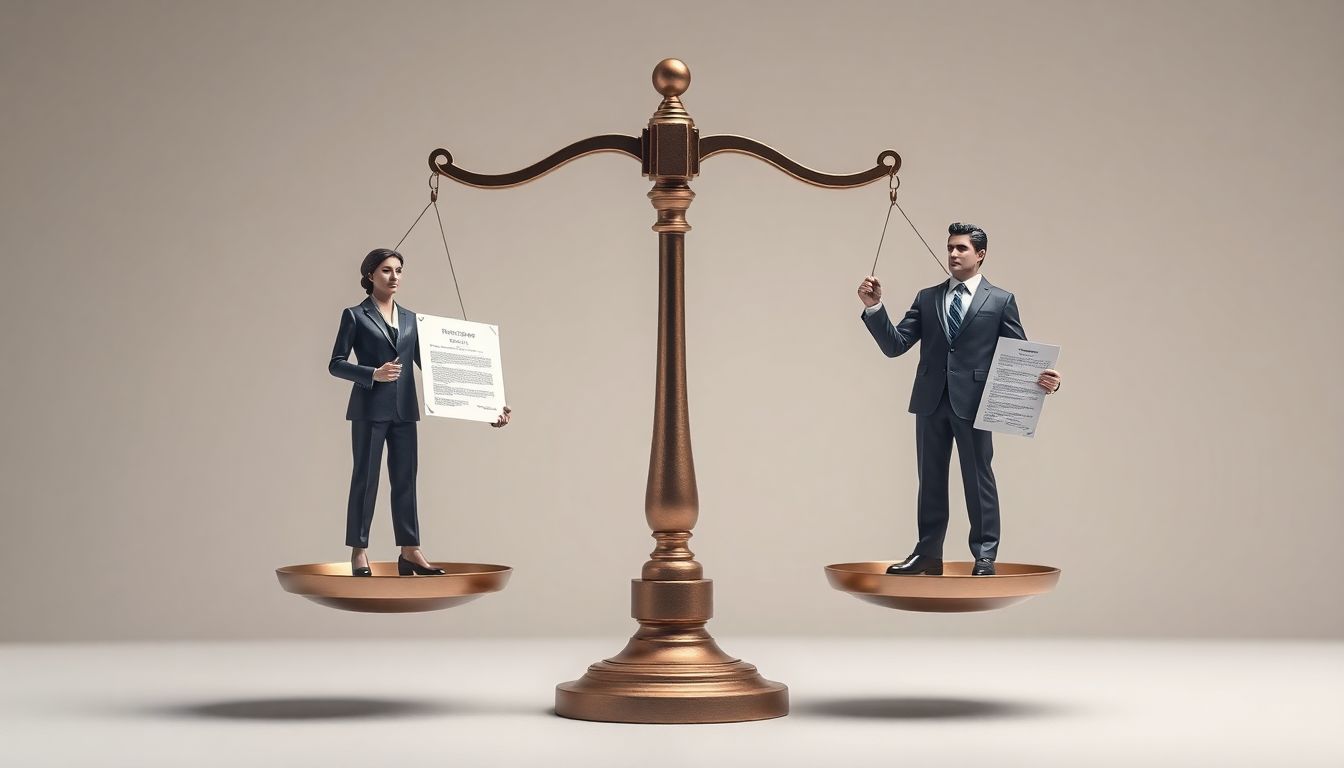
Employment Law: Protecting Workers' Rights and Defining Employer Responsibilities
Did you know nearly 70% of employees have experienced some form of workplace violation? Employment law is a critical part of today's business world. It sets the ground rules for how employers must treat employees. These laws are in place to protect you. They also guide businesses in creating fair workplaces. We will explore key rights for workers. Employer responsibilities will also be covered. This information is helpful for a better work environment.
Understanding Employee Rights in the Workplace
Workers have basic rights. These rights apply across most industries. It doesn't matter if you work in retail or tech. These are the rules to live by.
Anti-Discrimination Laws
Federal and state laws protect you. These laws stop discrimination based on race, religion, sex, and more. Age and disability are included too. This protection covers many aspects of work. Hiring, promotions, and even termination are covered. Harassment is a form of discrimination.
Imagine a company refusing to hire someone because of their race. That's illegal. What about denying a promotion because of someone's age? That is also against the law. These laws aim for fairness for all.
Wage and Hour Laws
These laws are about fair pay. They set minimum wage requirements. Overtime pay is another important point. Employers must properly classify workers. Are they exempt or non-exempt? Proper classification affects overtime eligibility.
Employers must keep accurate records. This helps track hours worked and pay. Common wage violations include not paying overtime. Misclassifying employees is another issue. Know your rights to fair wages.
Workplace Safety and Health
The Occupational Safety and Health Administration (OSHA) sets standards. Employers must provide a safe workplace. Employees can report safety issues. They are protected from retaliation for speaking up.
Think about a construction site without safety gear. That violates OSHA standards. What if an office has exposed electrical wires? That is a safety hazard. Workers have a right to a safe and healthy work environment.
Employer Responsibilities: Creating a Compliant Workplace
Employers must take steps to follow the law. This creates a better workplace for everyone. It's about more than just avoiding lawsuits.
Hiring and Onboarding
The hiring process must be fair. Background checks and drug testing must be done legally. Job postings can't discriminate either. Communicate policies during onboarding. Ensure new hires understand legal requirements.
Imagine a job ad that says "young applicants only." That's discriminatory. Onboarding is crucial. It sets the tone and explains the rules. Proper hiring avoids legal issues later.
Maintaining a Fair and Equitable Workplace
Policies about harassment are key. Diversity and inclusion training can help. Create ways to resolve workplace conflicts. Offer ways for workers to file a complaint. Make sure the procedure is clear.
A company that ignores harassment complaints is at risk. Training promotes a respectful environment. Clear complaint procedures give employees a voice. Creating a fair workplace is good for everyone.
Termination and Layoffs
There are legal rules for firing an employee. You need documentation. Some states require notice periods. Severance pay may be needed. Layoffs must be done fairly. They cannot discriminate.
Firing someone without cause can lead to legal trouble. Layoffs based on age are illegal. Following the law during termination protects employers and employees.
Key Employment Laws Every Worker Should Know
Certain laws have a big impact on workers. Here's what you need to know.
The Family and Medical Leave Act (FMLA)
FMLA allows eligible employees to take unpaid leave. This covers family or medical reasons. There are rules about eligibility. The law protects your job while on leave.
Imagine needing time off to care for a sick parent. FMLA might cover you. This law offers important protection during challenging times.
The Americans with Disabilities Act (ADA)
ADA requires employers to offer accommodations. Accommodations help workers with disabilities. This helps them perform their job duties.
Think about a blind employee needing screen-reading software. Or someone in a wheelchair needing a ramp. Employers must provide these.
The National Labor Relations Act (NLRA)
NLRA protects workers' rights to organize. Employees can bargain collectively. The law prevents unfair labor practices.
Imagine workers wanting to form a union. The NLRA protects that right. This law ensures fair treatment during labor disputes.
Navigating Employment Law Disputes: What to Do When Rights Are Violated
It is essential to know how to act when your rights are violated. Here is some guidance.
Documenting the Issue
Keep records of everything. Track incidents and conversations. Note possible evidence. Keep a log with dates, times, and details. List witnesses if possible.
Imagine being harassed at work. Keep a record of each incident. Note the date, time, and what happened. Documentation is key to any legal claim.
Reporting the Violation
Report internally first. Follow company procedures. You can also report to government agencies. The EEOC and DOL are possibilities. Be aware of time limits for filing claims.
Going to HR is often the first step. You can also contact the EEOC for discrimination. There are deadlines for filing, so don't wait.
Seeking Legal Counsel
Consider talking to an employment lawyer. They can assess your situation. They will advise you on the best course of action.
Facing a complex legal issue? Talk to a lawyer. A lawyer can help protect your rights.
Conclusion
Understanding employment law is key. Workers should understand their rights. Employers must know their responsibilities. A fair workplace benefits everyone. Don't hesitate to seek legal advice.



0 Comments